

Matt Campbell
2026 Hyundai Tucson Hybrid review
37 Minutes Ago
Curt gets behind the wheel of the Golf R-powered Arteon liftback to see if it's a true challenger to premium-badged Euro sedans.
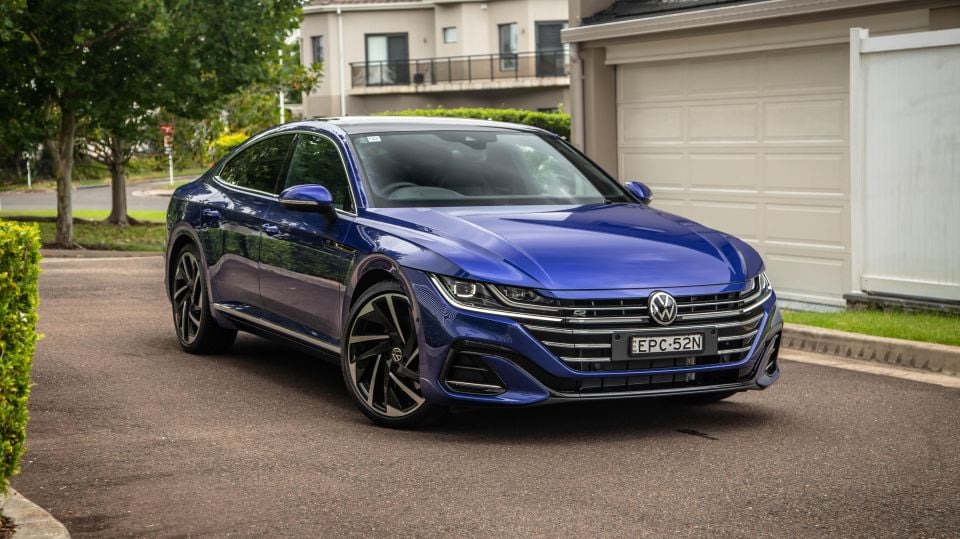
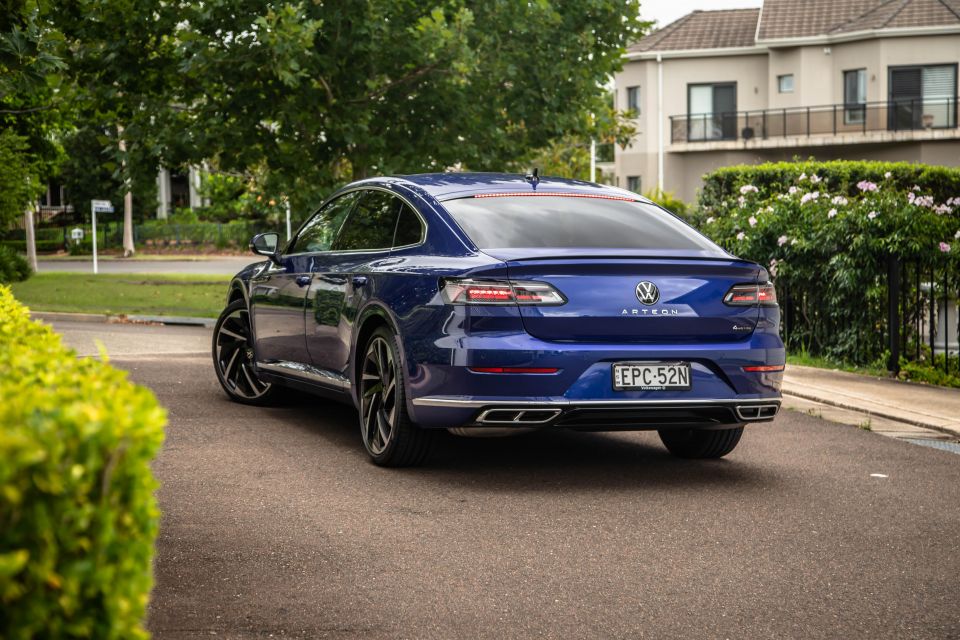

Quickly see how this car stacks up against its competition. Select any benchmark to see more details.
Where expert car reviews meet expert car buying – CarExpert gives you trusted advice, personalised service and real savings on your next new car.
“Wow” – or so was my response to the Volkswagen Arteon 206TSI R-Line before you.
A response, perhaps, Wolfsburg hopes its executive liftback might elicit in its pitch to lure you away from the usual premium German suspects. The flagship, in its exclusive hero Lapiz Blue Metallic finish, is an arresting combination and arguably $70,000 well spent on sheer impact alone.
Yet to date, Arteon has failed to fire with Aussie buyers. It arrived in 2017 and quickly fizzled away into obscurity. As reported prior, one Arteon sold locally in 2020.

On looks alone this recently facelifted Arteon attempts to rekindle on the flame, though it’s not a huge departure from its generally under-appreciated forebear. I imagine both its maker and importer wonders: where’s the love?
Is it the name? The sort of coin it demands for for its badge? Certainly, Volkswagen’s semi-premium schtick works well enough for its SUV and small-hatchback ranges, why not for a mid-sized coupe-like liftback? Would a hot R version, as offered overseas, boost Arteon’s fortunes? Or that new Shooting Brake-branded wagon?
On paper and screen, the Arteon offers plenty to like. The unlikeable stuff, then, should shake out in hands-on review. But you have to wonder if either, or both, are really going to influence Australia’s ambivalence to the model its maker views as a luxury figurehead.
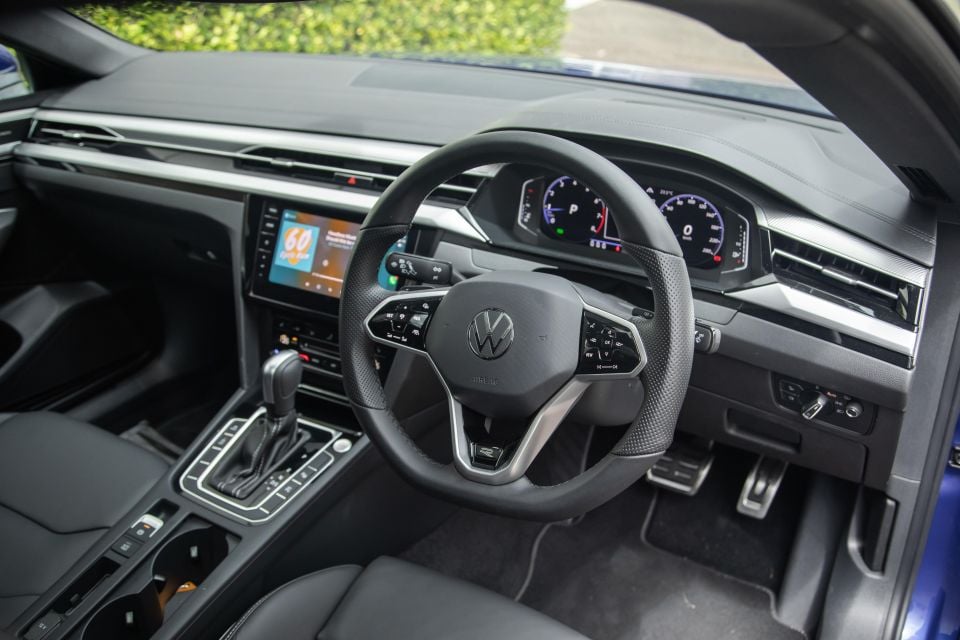
The liftback version of the Arteon 206TSI R-Line lists for $68,740 before on-road costs. The Shooting Brake wagon version adds $2000. That’s $3250 up on the original’s back in 2017 ($65,490), while the lower-power 140TSI Elegance version lists for $61,740.
Competitors? Close to home, a high-spec Passat 162TSI Elegance wants for $52,890 if you’re after a similar size on a keener budget. Alternatively, the forthcoming Mk8 Golf R will be priced from $65,990 if you’re after smaller if somewhat hotter all-paw performance.
Muddying the waters is size. Arteon gets categorised as ‘medium’ in Australia yet, at 4869mm long, it’s just 7mm shorter than the large Skoda Superb which, at $60,890 for the Sportline 4×4, makes for a logical cross-shop.
Mid-sized segment rivals are few… if the Arteon’s five-door liftback format is a priority. Audi’s A5 40 TFSI S line Sportback is $73,500 and BMW’s 420i Gran Coupe is $75,900 – both before on-road costs.
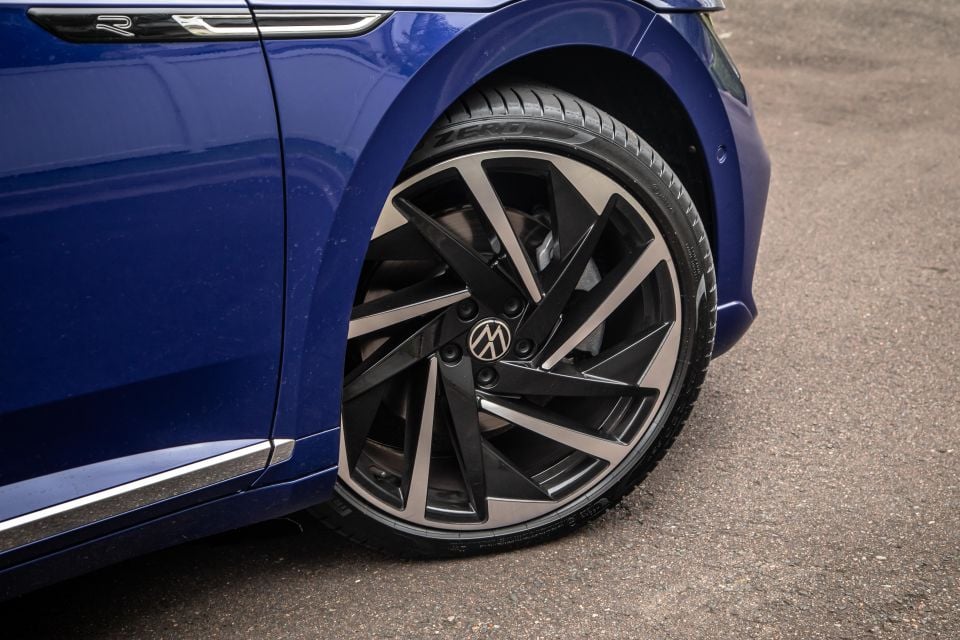
Without body style semantics, the top Arteon is priced closely to a mid-spec Audi A4 45 TFSI quattro S line ($70,800), the entry BMW 320i ($71,900) and you need to stump for Mercedes-Benz C300 ($75,300) for a 2.0-litre alternative.
Elsewhere, the four-pot Genesis G70 2.0T arrives at $63,000, the Jaguar XE R-Dynamic SE is $67,461 and Volvo’s S60 AWD B5 Inscription wants for $62,490.
Hyundai’s Sonata N-Line goes for a similar exec-sport vibe at a cut-priced $50,990, while Kia Stinger fans will no doubt highlight the (one segment up) breed’s rear-driven V6 GT bruiser can be had for $63,960.

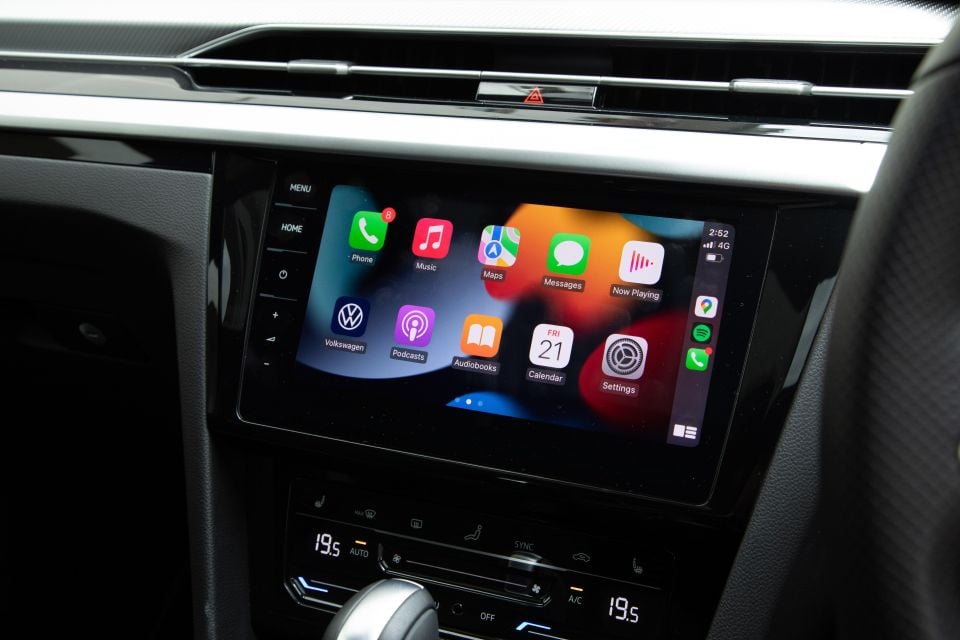
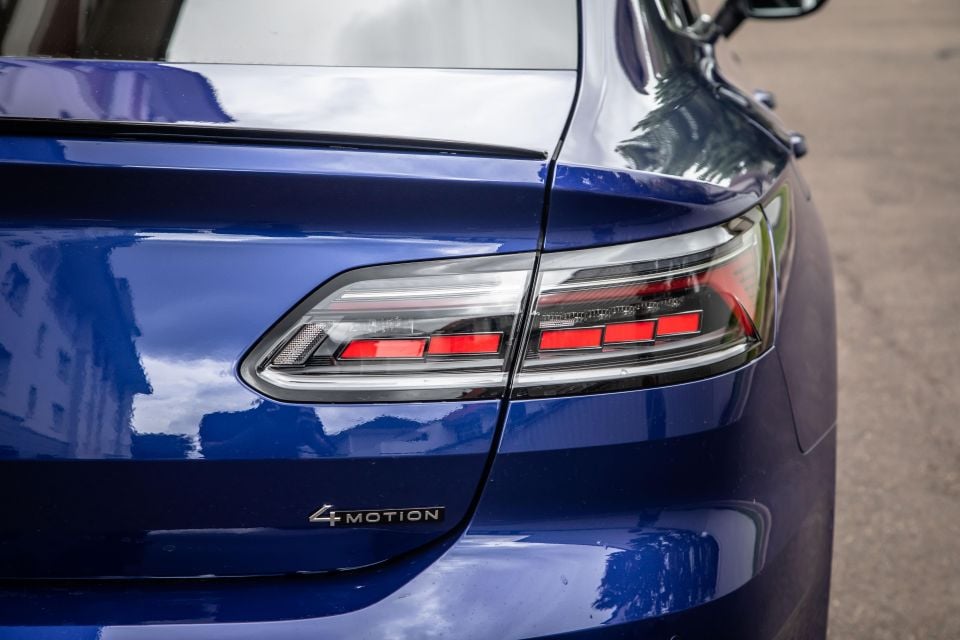
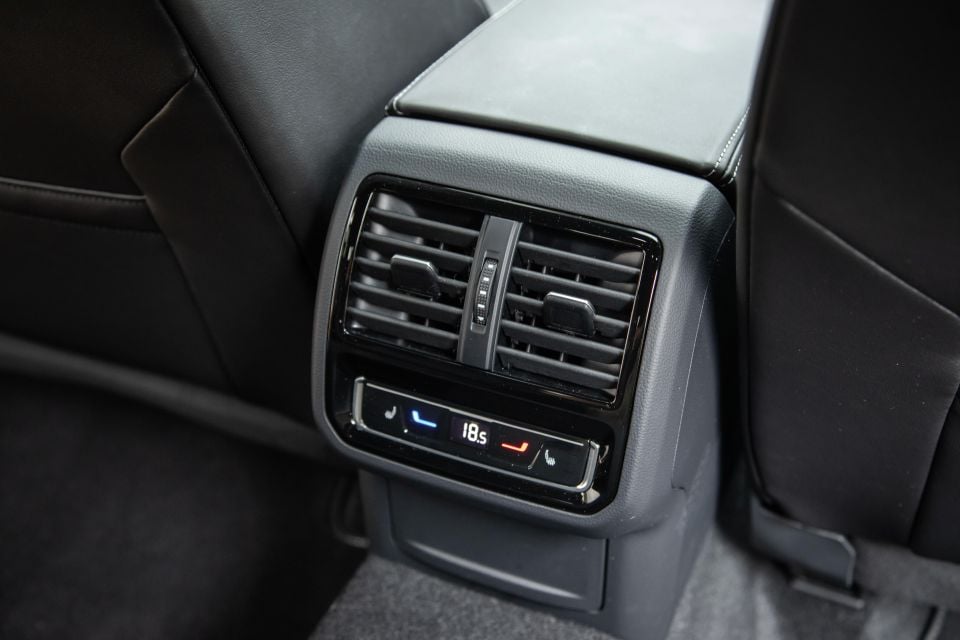
Buy your new car without the stress. It's fast, simple and completely free.

Great service from Travis and team, second time I have used this business would not hesitate to recommend them to anyone
Craig C.
Purchased a Ford Ranger in Sunshine Coast, QLD
CarExpert helped Craig save thousands on his Ford Ranger, now let us save you on your next new car.
Find a dealThe flagship Arteon comes brimming with features as its key point of difference from mid-sized premium German and European rivals.
In fact, five of the six available colours are no-cost outside of Oryx White Pearlescent, which wants for a premium ($800). A panoramic glass roof is really the only option, as fitted to our test car, which adds $2000.
Arteon 206TSI R-Line highlights:
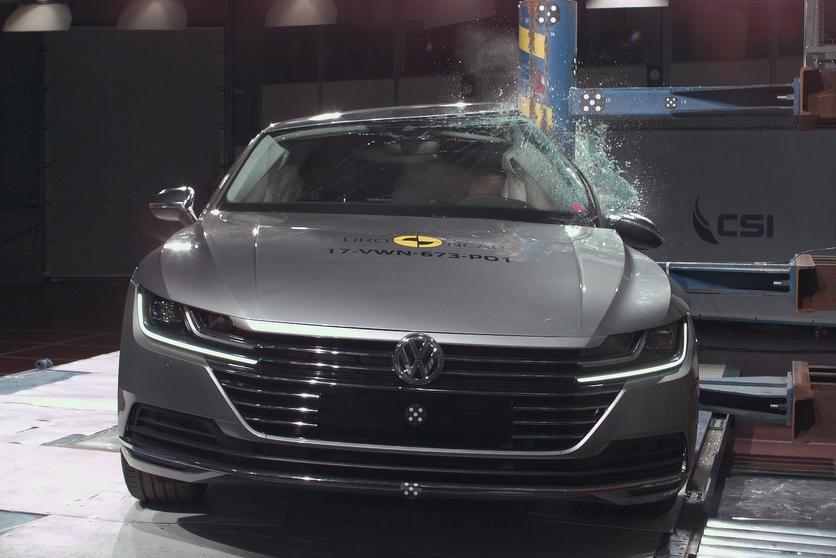
The 2022 Arteon carries over the pre-facelift version’s five-star ANCAP rating, as assessed in 2017 by Euro NCAP.
It scored 96 per cent for adult occupant protection, 85 per cent for child occupant protection, 85 per cent for pedestrian protection, and 74 per cent for safety assist.
Volkswagen’s ‘IQ.Drive’ active safety suite comprises:
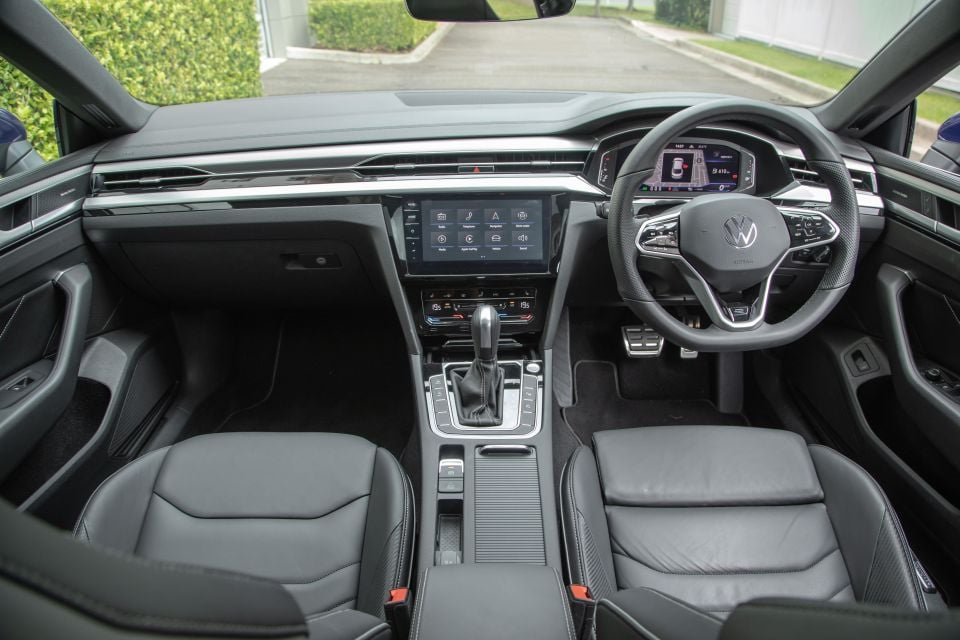
Presentation, for the most part, fits the bill and the flagship Arteon’s price point.
Perhaps unsurprisingly, there’s a vibe that blends Mk7 Golf R, particularly the deeply bolstered front pews with their semi-carbon-look trim and other R-isms, with some of the tech and control surfaces found in, say, a newer Mk8 Golf GTI.
It feels nice; classy and quite mature. That said, not much of the Arteon R-Line’s design or material use deviates from familiar territory. The execution is nicer than a lot of mainstream stuff yet not quite as convincingly premium as some mid-sized Euros it hopes to be considered on par with.
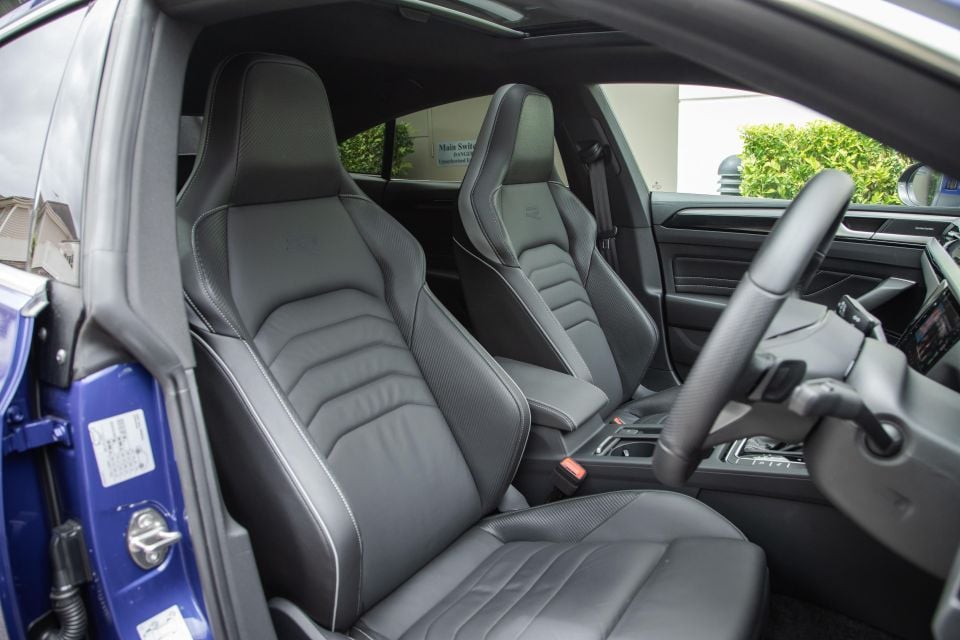

So not much in the way of corner-cutting or cheap plastics – most surfaces are that textured stuff VW loves – but it does miss the mark a little for proper luxurious X-factor, particularly in some of the wavy seat stitching. That said, the R-Line piles on the lavishness in other places.
There’s plenty to relish. The infotainment screen is large and crisp, the steering wheel tactile, seat comfort and the low-slung seating position fittingly sporting-exec.
The frameless windows, too, are a proper coupe nod and a treat. Just how the cabin stretches itself through both rows of seating, providing a huge amount of legroom wherever you’re seated, is quite classy. Ditto the three-zone climate control, with dedicated rear controls, as well as the flocking in the door bins and centre console cubby.

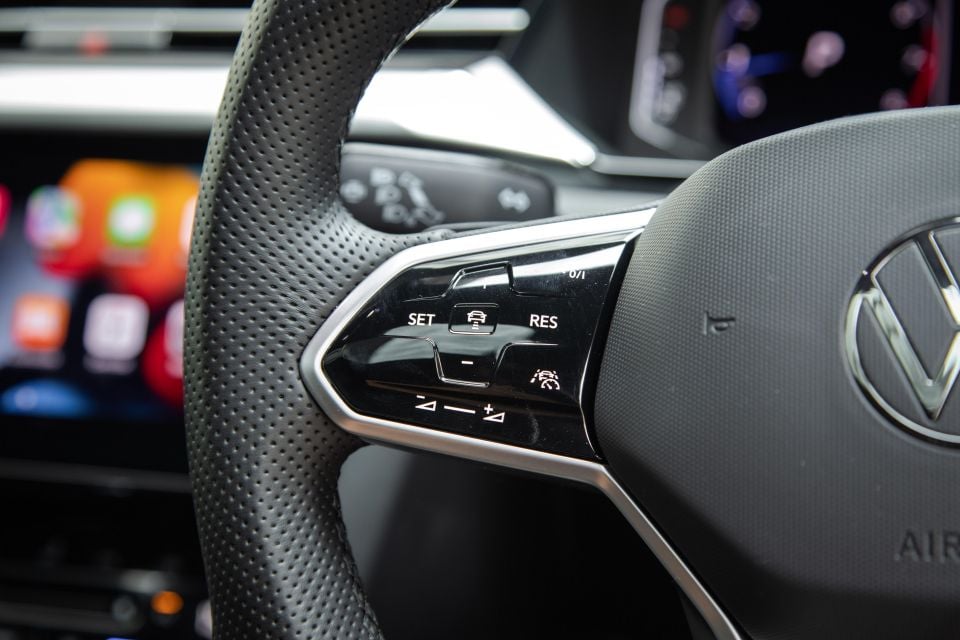
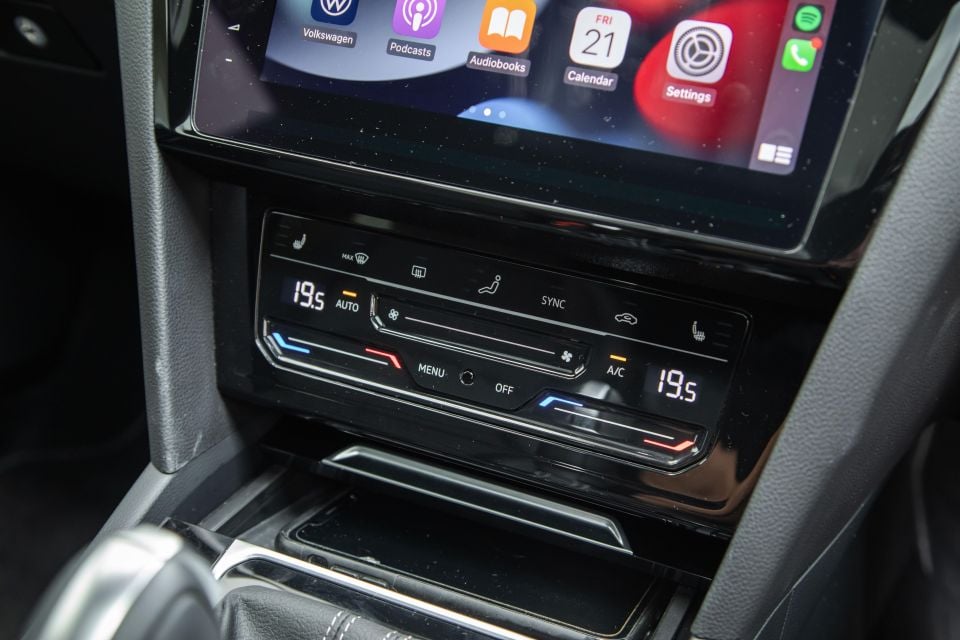
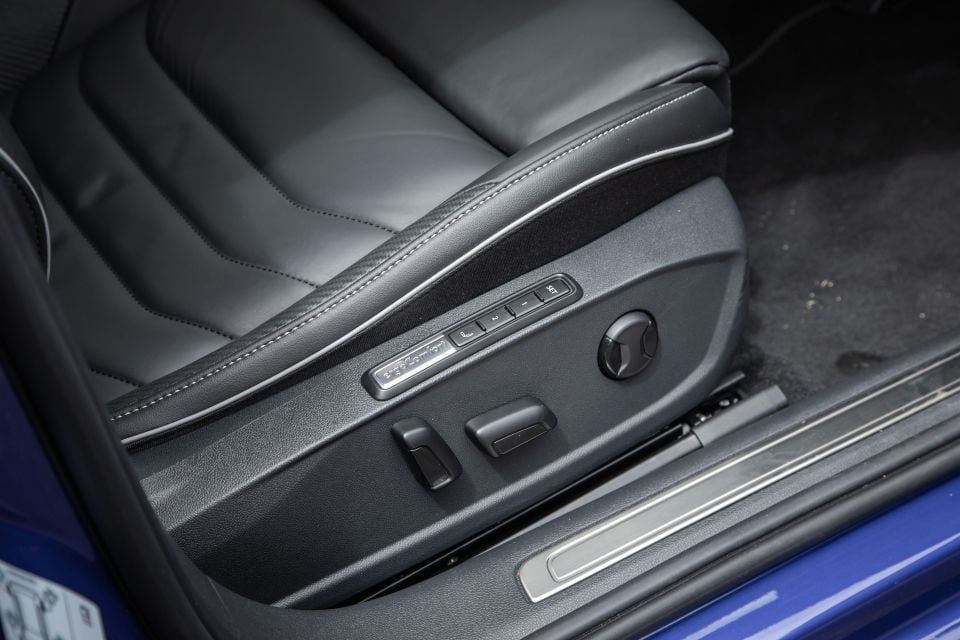
Volkswagen’s new flat-surface control format – there’s not one dial in the cabin – is a matter of taste. For the record, not mine.
Bar the infotainment touchscreen, there’s less of the lovely ‘device glass’ effect and the button, especially the wheel controls, are a bit plastic and clumsy. The approach is mixed, too, with conventional buttons around the transmission selector, which comes across as a little parts-bin. Slide controls for temperature and the lack of a physical volume knob are two annoyances.
The small, framed digital driver’s screen, the glass roof that stops short of row two (perhaps to facilitate rear headroom), the lack of inductive phone charging ever-present reminders that Arteon doesn’t lunge into the premium leagues more confidently than any other Volkswagen.
Update: An earlier version of this story incorrectly said the Arteon was missing automatic wipers. The story has been corrected.
The flipside is that there’s enough flash to leave the top dog R-Line still feeling like a bit of a special machine.
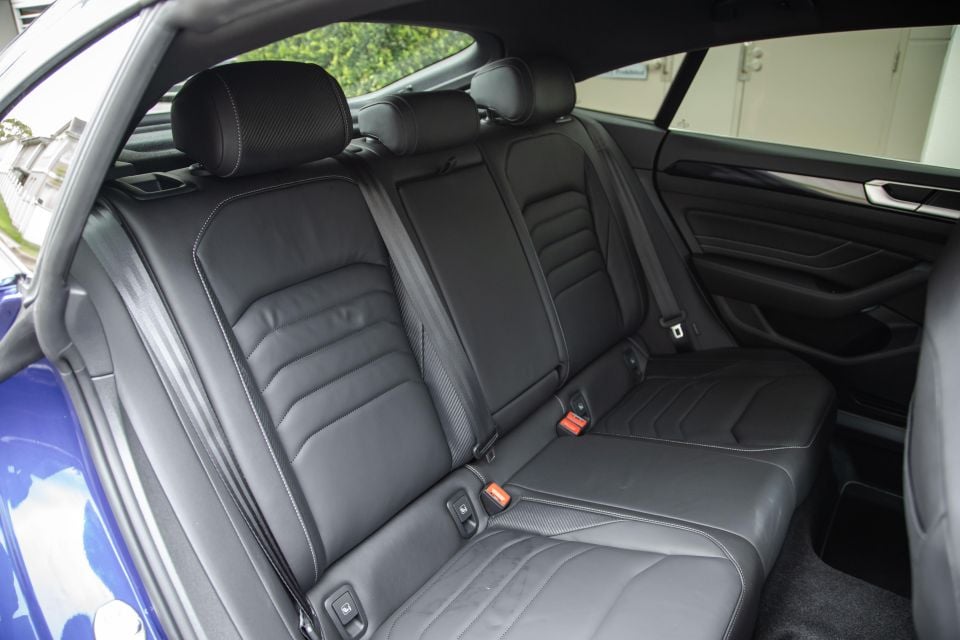
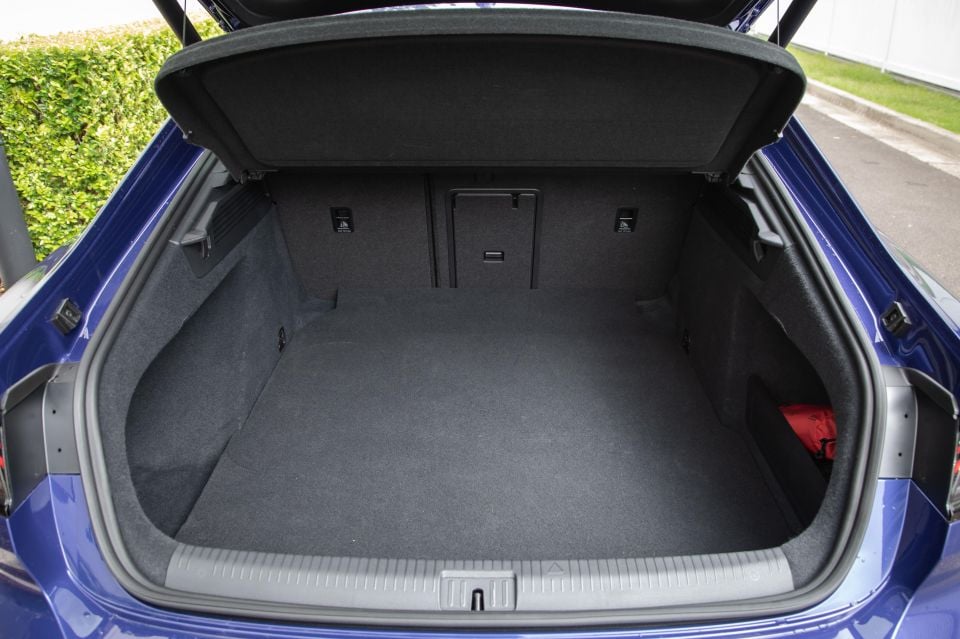


Infotainment is decent, with crisp presentation, simple menu tiling, a clear and helpful sat-nav, and fine sound from the high-spec Harman Kardon audio. Letdowns are the graininess for the otherwise handy multi-view camera system and the usual glitchiness that seems to afflict most wireless CarPlay systems these days. USB ports – two in the console bin, one for rear occupants – are the smaller USB-C type.
Rear occupancy brings a strong plus-two vibe in seating, which is quite bucketed in the outboard positions, leaving the middle seat mostly useful as an emergency measure. There’s also a pronounced tail-shaft tunnel to straddle, too.
But as a four-adult prospect it’s tidy, with plenty of business-class roominess, including the helpful concave ceiling the adds some extra headroom.
Luggage space is, at 563 litres, enormous. The boot is super deep, load-in through the liftback is completely unencumbered, and there’s a handy ski port if you’re into that sort of thing. A nice bonus is that the spare wheel is a full-sized alloy shod with the same 245/35 R20 Pirelli P Zeroes as the Arteon sits on.
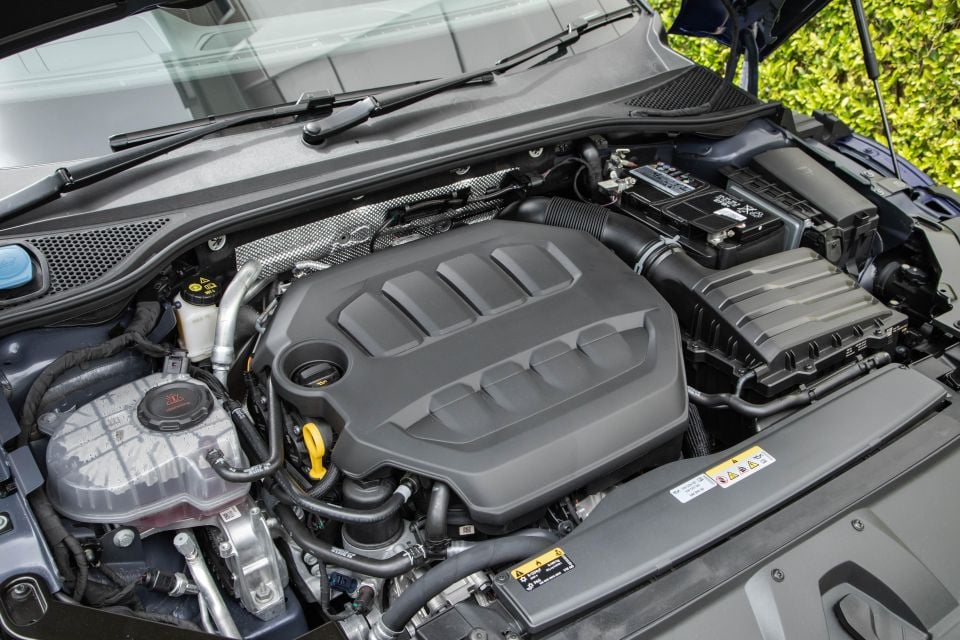
While both grades of Arteon are powered by 2.0-litre turbocharged petrol fours, the 206TSI outputs 206kW, which is the same peak power advertised since 2017. However, where the original offered 350Nm, the current tune brings a not inconsiderable torque hike to 400Nm.
In comparison, the full-fat Arteon R offered overseas adds a further 20kW and 20Nm, a notable if not significant difference. Though different in outputs and engine codes, the Arteon R-Line essentially – though not identically – shares a sizeable chunk of its propulsion with the Golf R hot hatch.
Acceleration is advertised at 5.7 seconds from 0-100km/h. That’s one-tenth slower than the pre-facelift Arteon. Drive is delivered via a seven-speed dual-clutch automatic gearbox and Volkswagen’s 4Motion all-wheel drive system.

Unlike its premium German rivals, such as Audi’s (MLB platform) A4/A5, the Arteon is built off transverse-type (MQB) front-drive underpinnings rather than a longitudinal arrangement.
It’s a fundamental technical difference, if one many prospective buyers and owners mightn’t know or necessarily care about.
All Arteons feature a petrol particulate filter (PPF) and the 206kW spec demands 98 RON for optimum operation, returning a claimed 7.5L/100km on the combined cycle, the same as the older versions.
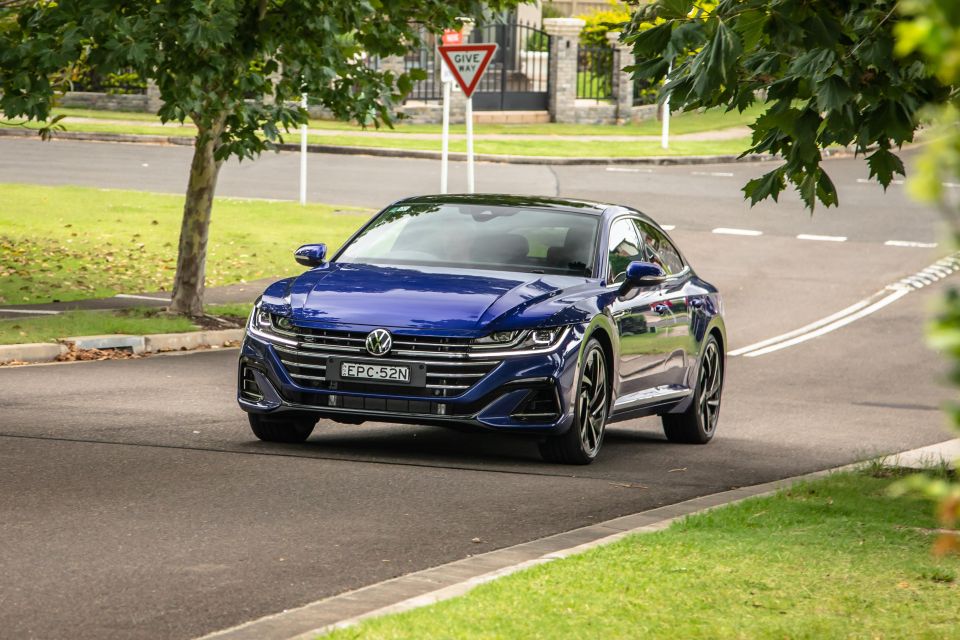
If you’re presuming our subject is drives much like a Golf R-powered luxury sport coupe, you’d be right on the mark. If with plenty of key differences, some subtle, some less so.
There’s a real dignity to the powertrain’s on-road manner. That familiar Golf R DNA is apparent in the engine, though it’s almost overly polite in Normal drive mode and, with Sport activated, the characteristic raspiness has been largely suppressed.
Nor is Sport so edgy and assertive that it can’t be used as a default around town drive, to keep point-and-shoot response nice and taut.
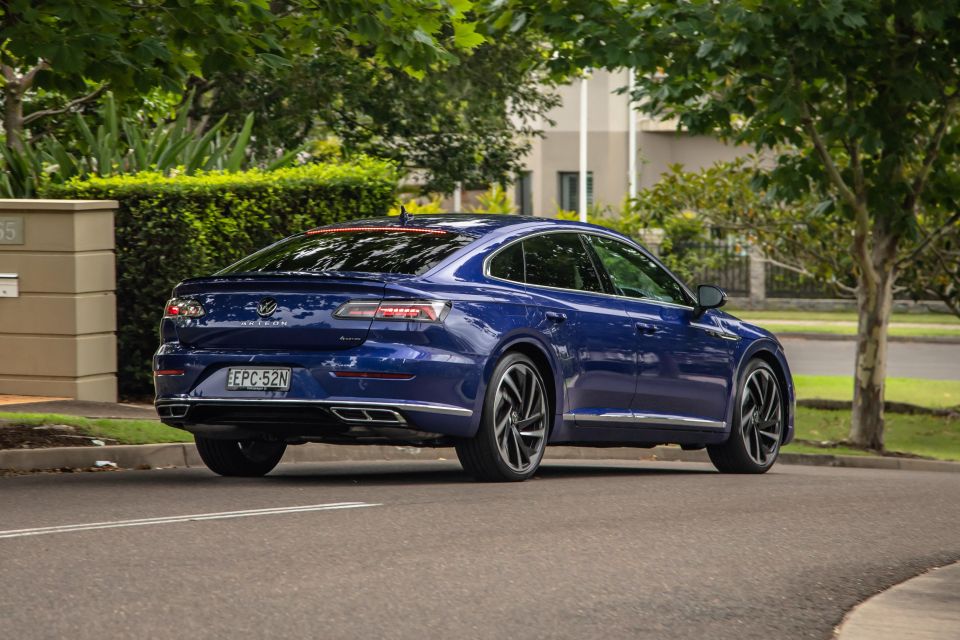
Where expert car reviews meet expert car buying – CarExpert gives you trusted advice, personalised service and real savings on your next new car.
In many ways, this powertrain fits the Arteon R-Line nicely. Similarly, Volkswagen could’ve (easily) upped power and fizz, but focusing instead on fattening torque to boost the 1.75-tonne coupe-liftback’s general drivability seems like the ideal outcome.
Low-rev response is crisp and immediate, thrust is eager and unflustered, and the seven-speed dual-clutch in particular, is impressively seamless and intuitive – a high watermark in the marque’s sometimes patchy DSG providence.
The powertrain fits the bill well because, despite racy appearances, the rest of the package doesn’t exude sportiness. The chassis clearly favours planted grand touring and cruising rather than corner-carving friskiness by its nature, with handing that’s planted if far from animated or enthusiastic.
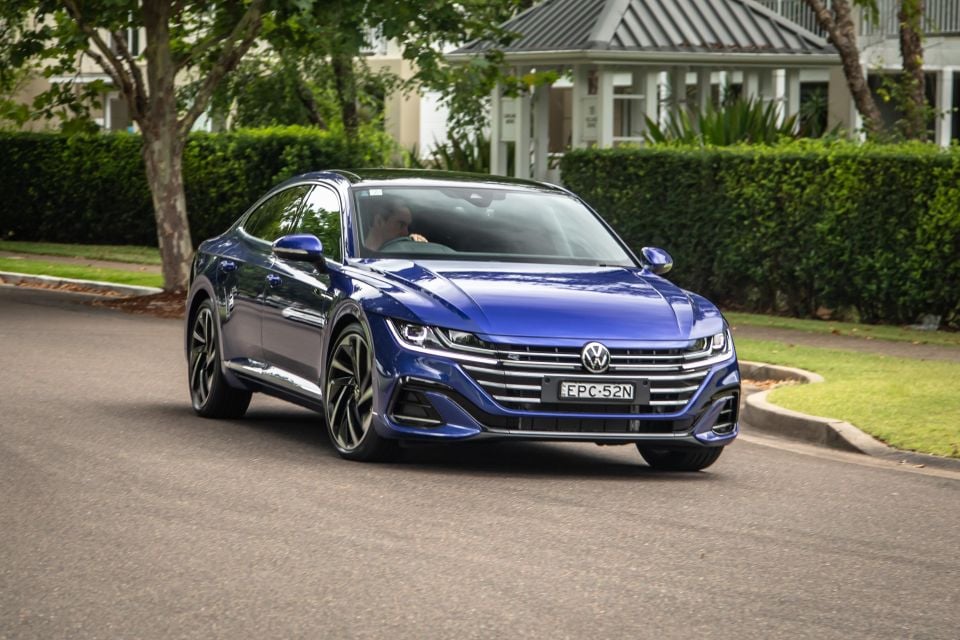
The steering is a little inert and the front end is touch ponderous, no doubt much of it associated with the transverse MQB platform stretched to the sort of lengthy wheelbase this chassis adopts.
As a driver’s car the Arteon R-Line is capable, but it’s no 3 Series. If you’re after big grins and hot cornering theatrics, go for a Golf R instead.
Left to its own devices, in Normal, the ride quality is decent if unremarkable. In particular, the suspension is a little too firm, undoubtedly to maintain a keen sense of road-holding, and is prone to jolts and noise negotiating sharp road imperfections and potholes.
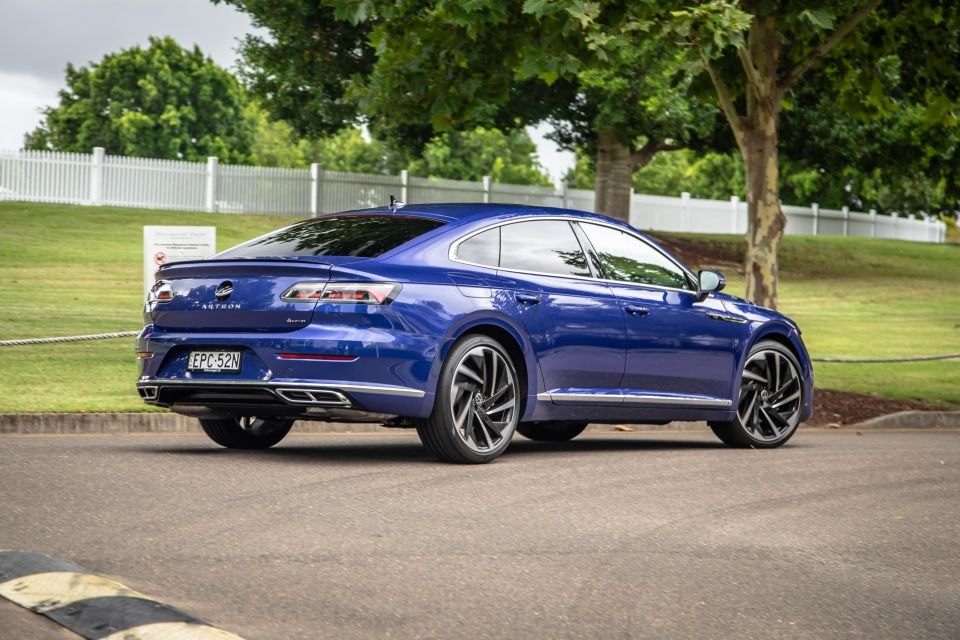
Tyre noise, too, is surprisingly prominent. The lack of vibration and noise isolation is hardly overbearing, but it does ultimately impact the luxury feel the Arteon conspires towards.
What it does demand is digging into the Individual drive mode and tuning up the DCC adaptive dampers to taste, via slider adjustment, through myriad graduated settings (labelled Comfort to the left and Sport to the right). It’s a huge amount of adjustment, with most of the pleasing settings at the softer end of the spectrum.
It’s a pleasant enough machine around town but it really comes into its own on the open road. Long-haul comfort is exceptional and there’s enough on-tap poke for confident merging or overtaking on a whim.
The suspension settles nicely carrying speed, with none of those around-town quibbles. It’s no fire-breather, but nor does it need to be eating up the touring kilometres, where it feels right at home.

Like all Volkswagens, the Arteon comes with a five-year, unlimited-kilometre warranty.
Servicing is required every 12 months or 15,000 kilometres. Pricing for conditional Care Plans are $1500 for three years or $2500 for five years.
Or, of course, $500 per visit. Intervals get more expensive bought individually, costing as much as $668 per year averaged across the first five years.
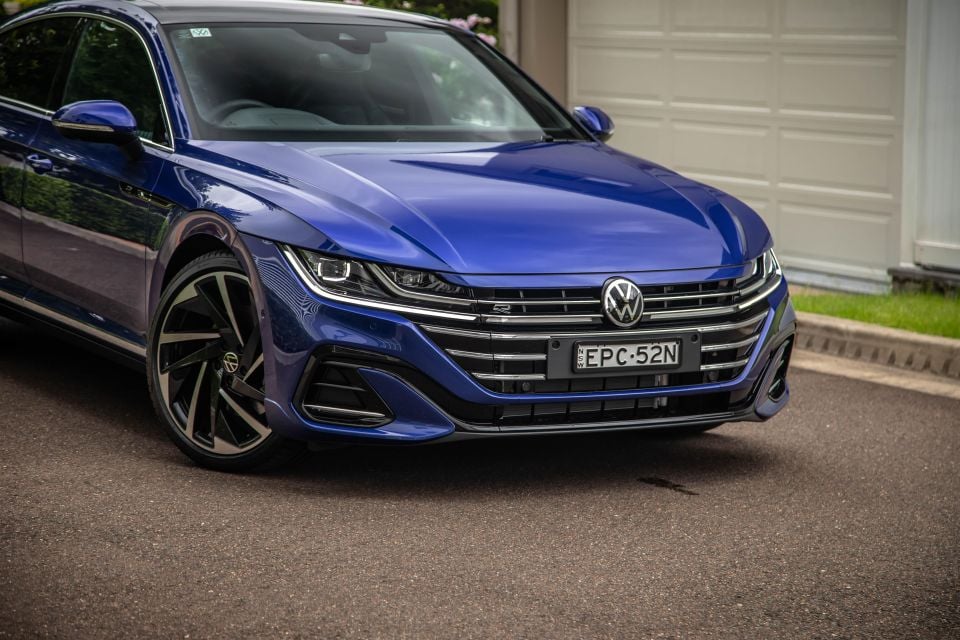
The high-spec Arteon liftback is fetching and very likeable, at a price that feels about right. Importantly, it’s a compelling alternative to the ‘me too’ budget end of the premium set, especially when it comes to spec for its price, and it certainly enriches the wider motoring landscape with its presence.
Worth consideration? Absolutely. Will more Aussies be drawn to this new facelifted version (or the new Shooting Brake) than its forebear? Well…
Poke around the web, or our own comment sections, and it seems many Arteon adopters were or are fast Golf – particularly Golf R – owners too. In the words of owner-reviewer ‘Oosh’: “It’s a bigger, softer Golf R”.
Perhaps Aussies’ almost rabid appetite for red-hot Golfs goes some way to explaining why its larger, more-tempered stablemate hasn’t been embraced with quite the enthusiasm it deserves to date.
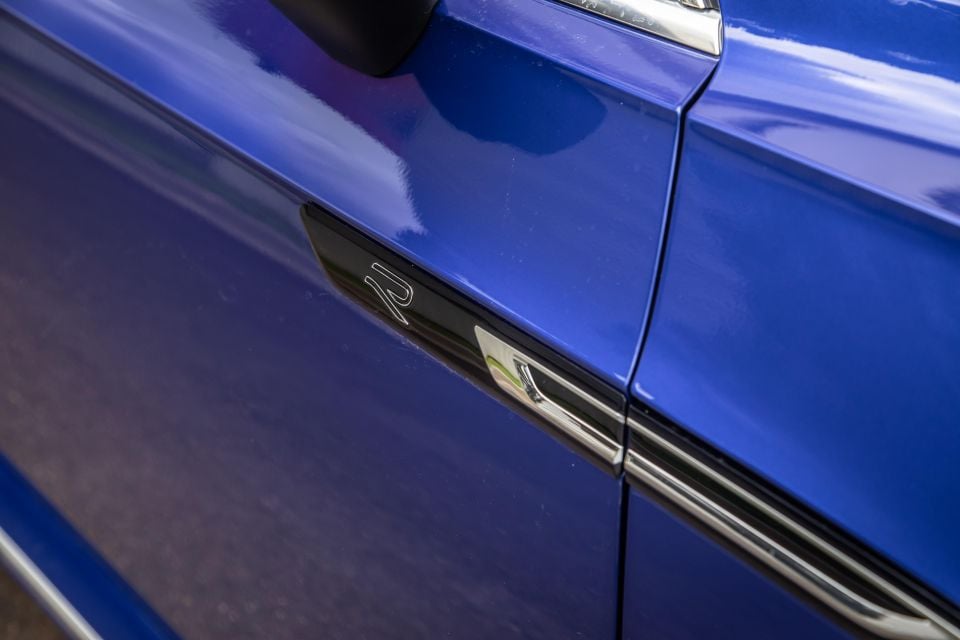
Click the images for the full gallery
Where expert car reviews meet expert car buying – CarExpert gives you trusted advice, personalised service and real savings on your next new car.


Matt Campbell
37 Minutes Ago


Max Davies
17 Hours Ago


William Stopford
17 Hours Ago


Derek Fung
17 Hours Ago


Max Davies
1 Day Ago


William Stopford
2 Days Ago